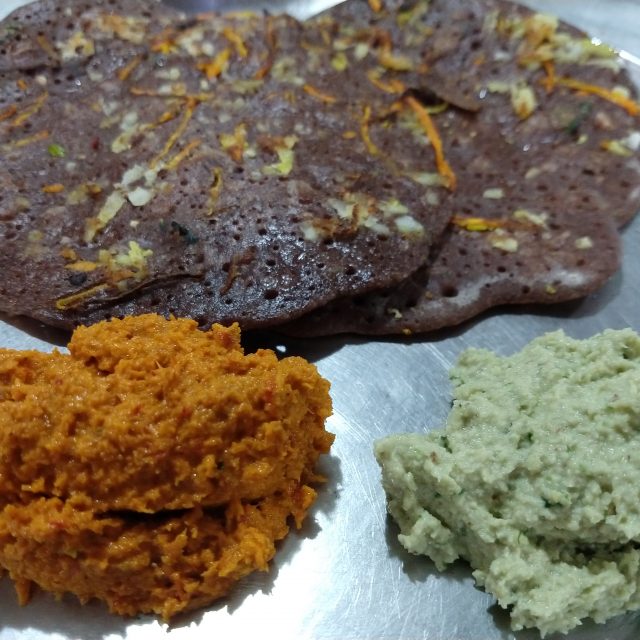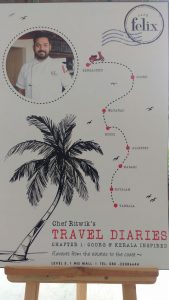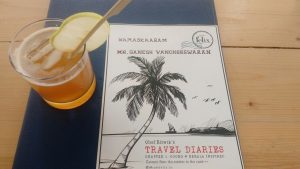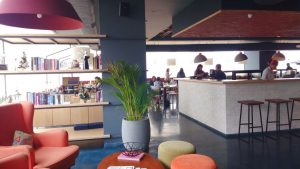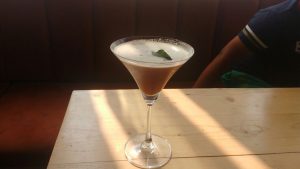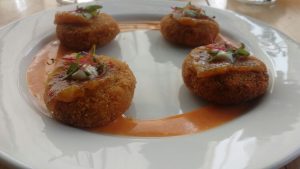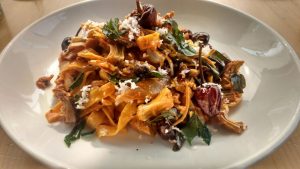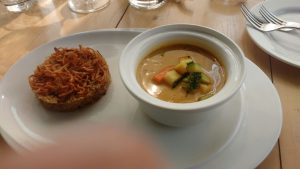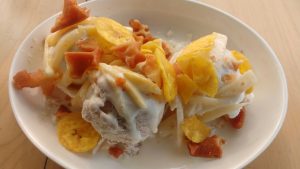I loathe stepping out of home on weekends, when I should be idling in bed with a book. Weekends are when things are supposed to come to you automatically from time to time. You shouldn’t have to go out seeking anything. But this morning, I dragged myself out of home and went all the way to Malleswaram for a mini breakfast crawl. My friend is leaving town this month-end and I wanted to take him to one or two of our old eateries.
Our first stop was New Krishna Bhavan (NKB), diagonally opposite Mantri Square mall. We shared a plate of Ragi Dosai and a plate of Jowar/Jolada Dosai. They were true to form. It is always good to eat at NKB. The red onion-chilly chutney and the pure coconut chutney are distinctive touches here. I felt like asking for a second helping of just the onion chutney; it was so good!
From there, we walked up to 7th Cross Road and turned left to reach CTR. I last went to CTR nearly a decade ago. I wanted to try the much-touted benne masala dosa and see if it lived up to the hype. Despite changing its name to Shree Sagar, this restaurant has retained its simple, old-world look, which is very comforting. The fans, the colour of the walls, the framed painting of Madhvacharya, elderly women who remind me of my grandma, the tables and chairs – all seem to be unchanged.
As expected, all the tables were taken and there were nearly 50 people waiting for their turn to sit. The place resembled a stock market of yore, with much raising of hands, signalling and coded gestures. Much like the others, we took up position right next to a particular table in order to ‘reserve’ our seats. The word ‘reserved’ hung in the air. Everyone was looking at everyone else, wondering who was getting up and who was getting a seat. Furtive glances were cast at the tables nearby to figure out what was being eaten. All of us, I am sure, were mentally willing the seated customers to get the hell out asap!
We must have waited for about 15 minutes before we got a table, but in IST (Indian Stomach Time) terms, it seemed like 45 minutes. Post-ordering, our Benne Masala Dosas took another 20 minutes to come. They turned out to be good, but nowhere close to the hype generated. They were just good masala dosas that had been cooked extra-crisp thanks to a generous use of butter. Honestly, you find similarly good dosas in many places across town. It may make sense for people around this neighbourhood to visit CTR frequently, it does not make sense for me to come here again for a long time.
This is just my personal take. Die-hard fans of CTR, please continue to love their dosas. ![]()
This trip helped me bust a myth (that CTR’s dosas are out-of-the-world) and confirm a theory (that most people probably rave about old joints and romanticise them due to their heritage and a strong sense of nostalgia. The taste of the food really is actually not the major factor in these cases.)
Finding the room too stuffy (and wanting to vacate our place for the guys standing at our elbow), we paid the bill and stepped across the road to Temple Meals for filter coffee.
Over coffee, my mind kept going back to NKB. Would they think I am a madman if I were to go back there and ask for just a bowl of that red chutney? ![]()
P.S. We paid for the food ourselves.
